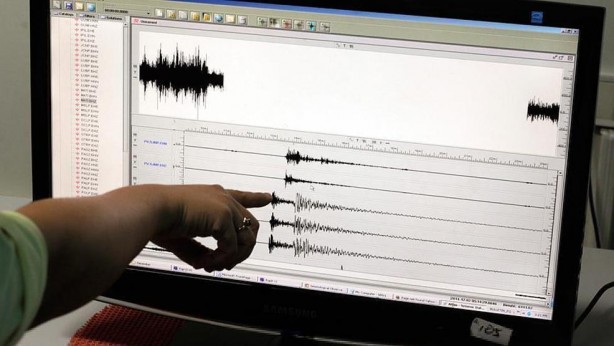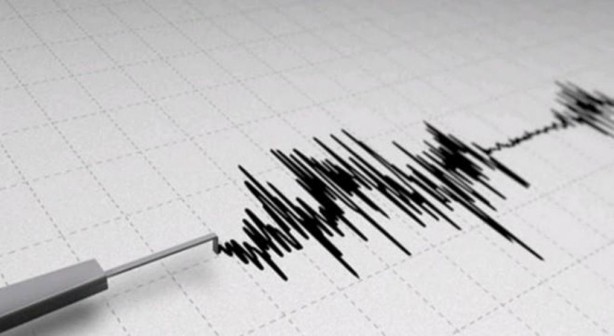Consecutive earthquakes in Antalya! Experts warned

Foto D21 Animasyon - Arsiv
Consecutive earthquakes in Antalya! Experts warned
Two consecutive earthquakes of magnitude 4.1 and 4.2 occurred off the coast of Kaş, Antalya. Details about the earthquake were explained by Prof. Dr. Murat Utkucu and Disaster Management Specialist Assoc. Prof. Dr. Bülent Özmen .

More than 15 earthquakes were recorded from the first minutes to the last seconds of August 9. The occurrence of earthquakes larger than magnitude 4 has caused concern in the region. Two experts explained whether the tremors could be a sign of a major earthquake and the ‘real danger’ in Antalya’s earthquake history.

The earthquakes greater than magnitude 4, which have been recorded almost every day in the Mediterranean in recent days , occurred one after another in a short period of time on August 9th. The tremors that entered the radar of seismographs off the coast of Crete, the Mediterranean and Antalya on the same day were felt from many points. When warnings that points that stand out as plate boundaries may be more critical in terms of earthquake danger come to mind, Antalya’s name, although not often mentioned, caused concerns. A total of over 15 earthquakes were recorded from the first minutes to the last seconds of August 9th .

While the danger of a tsunami, which may occur especially due to the rupture of underwater faults, threatens the Mediterranean coast, the earthquake history of the region has revealed that this is not a distant possibility. Sakarya University Disaster Management Application and Research Center Geophysical Engineering Faculty Member Prof. Dr. Murat Utkucu and Gazi University Engineering Faculty Civil Engineering Department Faculty Member, Disaster Management Expert Assoc. Prof. Dr. Bülent Özmen explained the events to Milliyet.com.tr.

EARTHQUAKE HISTORY IS DARK
Like many parts of Turkey, Antalya is also an earthquake zone, although it has not been on the agenda much. Assoc. Prof. Dr. Bülent Özmen explained the earthquake history of Antalya and the Mediterranean. Unfortunately, the region has been shaken many times by devastating earthquakes and suffered losses. The last 6-magnitude 2021 Crete earthquake was recorded off the coast of Crete on September 27, 2021 , and 1 person lost his life. This earthquake in 2021 was the largest earthquake to hit Heraklion, the administrative center of Crete, in the last hundred years, and of course it was not the only one. The Mediterranean coast is a point where there are many faults with the potential to produce devastating earthquakes. Assoc. Prof. Dr. Bülent Özmen explained the dangerous region, which includes Antalya, as follows:

“There are many faults in Antalya and its surroundings that have the potential to produce earthquakes. These faults can be listed as the Fethiye-Burdur Fault Zone, the Hellenic-Cyprus Arc, the Kırkkavak and Aksu faults. There are also many active faults in the Gulf of Antalya and the Aegean Sea that have the potential to affect Antalya. In the historical period, that is, before 1900, earthquakes affecting Antalya occurred in 1459, 1743 and 1851. It is possible to see traces of these in many historical monuments within the borders of Antalya province.

In the instrumental period, that is, after 1900, many earthquakes affecting Antalya occurred: 6.0 on 30 April 1911, 6.6 on 3 October 1914, 6.0 on 1 March 1926, 6.5 on 18 March 1926, 6.1 on 5 June 1927, 5.9 on 11 September 1930, 6.5 on 24 April 1957, 6.7 on 25 April 1957, 6.2 on 23 May 1961, 5.8 on 12 May 1971, 5.9 on 30 April 1975, 6.0 on 28 May 1979, and 6.1 on 1 October 1995. When we look at this data, it can be seen that the most important earthquakes affecting Antalya in recent history were the Fethiye earthquakes that occurred on April 24, 1957 (Mw 6.5; Ms 6.8) and April 25, 1957 (Mw 6.7, Ms 7.1).”

‘THE REAL DAMAGE WILL COME FROM THE TSUNAMI’
Considering that many points of Turkey are shaken by earthquakes and that earthquakes are encountered from time to time, it would be a mistake not to mention Antalya. However, experts are warning about tsunamis as well as earthquakes for Antalya and the Mediterranean coasts. The ‘tsunami’ detail that attracted attention in earthquakes that occurred before 1900, in historical times, should not be underestimated. Prof. Dr. Murat Utkucu made the following statements on the subject: “Earthquakes that may occur around the island of Crete may affect Antalya and its surroundings with strong ground movements and tsunamis that they may create. Considering the July 21, 365 Earthquake that occurred west of the island of Crete and whose magnitude is estimated to be 8.3, there is a possibility that it will be affected by the ground movements of large earthquakes, although not very strong. The distance of the island of Crete from Antalya will prevent it from being affected too strongly. However, tsunamis that will occur from large earthquakes around the island of Crete will affect Antalya and its surroundings. Antalya city center will be relatively less affected by these tsunamis due to the Teke Peninsula to its west. However, Fethiye and Kaş districts are likely to be affected more. The 365 earthquake ground motion and tsunami affected Sicily, Greece, Cyprus, Libya, Southwestern Turkey, Egypt and Palestine. In addition to the 365 earthquake around Crete, the 66, 800, 1303, 1630, 1867 and 1886 earthquakes were effective in history,” he said.

Assoc. Prof. Dr. Bülent Özmen made the following remarks regarding a possible tsunami: “Since earthquakes under the sea, especially those with magnitudes greater than 7, cause or can cause tsunamis, their destructive power is much greater. As we have seen in many places around the world, tsunami waves can often cause much more destruction and damage than earthquakes. The fact that numerous earthquakes with magnitudes greater than 4 have occurred on the island of Crete and its vicinity in recent days and months has drawn attention to this region.

When we look at the earthquakes that occurred in this region in historical times, we see that many earthquakes have occurred. The largest of these was the earthquake of magnitude 8.3 that occurred on July 21, 365. There is a possibility that earthquakes of magnitude 7 and above could cause some damage to the settlements located on the coastline of Muğla and Antalya provinces. The real danger here is that tsunami waves will occur after earthquakes of magnitude 7 and above. Since tsunami waves can reach very distant areas, the probability of damage to the coastal area due to tsunamis is extremely high.”

PREPARING FOR AN EARTHQUAKE MORE THAN A MAGNITUDE OF 8?
Finally, the February 6 earthquakes had opened deep wounds in Turkey’s earthquake history. However, the earthquake on February 6 was neither the first nor the last time this land experienced. In other words, a country located on fault lines with a dark past dating back thousands of years was not something it could escape.
The only solution was to build solid structures and understand that it was not the earthquake that would kill, but the building. The fact that earthquakes were happening every day in the Mediterranean and Antalya open seas brought to mind the question, “Will Antalya collapse one day?” Prof. Dr. Murat Utkucu drew attention to the building stock with the following words: “The only factor that determines the earthquake risk is not the earthquake danger, namely the magnitude and distance of the earthquakes that occur. The quality of our buildings and the ground conditions are also determinative. Therefore, it can be said that the effect that will occur will be the combination of these factors.”

Updated Date: 10.8.2024
Source: HaberVitrini
- Çin ve Endonezya “2+2” diyaloğu düzenledi - 21/04/2025
- Eş Başkan Bucak, Sakine Arat için verilen mevlide katıldı - 21/04/2025
- DBB ‘Kampüste Çözüm’ standıyla öğrencileri dinliyor - 21/04/2025
Kandilli son depremler listesi için TIKLAYIN
AFAD son depremler listesi için TIKLAYIN
DEPREM iLE iLGiLi HABERLER
CANLI SKOR![]()



















































